My Hugelkultur bed inspired by reading Sepp Holzer's Permaculture book. This image below is from after we completed the under layers and mulching in 2012. Now we had our hugelkultur mound and we could begin to plant it. I designed this bed to be a bed for perenial fruit crops like strawberries, highbush blueberries and fruit trees.
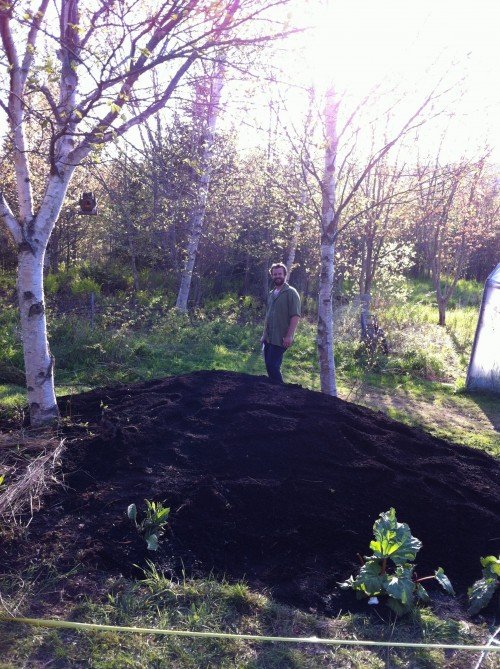
In the series of images that follow you can see the bed's plantings from various angles. We purchased a 3 year old Greensleeves apple tree, a heritage breed once grown in our region. We knew we liked it since we had sampled it from an old orchard down the road where it is still doing well wild and un-cared for. We also purchased a Pear tree but last year 2015 it sadly died from under watering during a critical time. We placed the trees and 3 high-bush blue berry shrubs around the perimeter of the mound to allow maximum use of the modest space.
In this image you can see kale, strawberry transplants and rhubarb.
I'm watering down the new apple tree here and you can see some Comfrey in the foreground
This bed started out as a wild space in my backyard. Eventually I turned my eye to making use of the place. It had some spruce or fir evergreens which I cut down to allow the two best birch trees to grow larger. The following year I made the beginnings of a perennial bed.
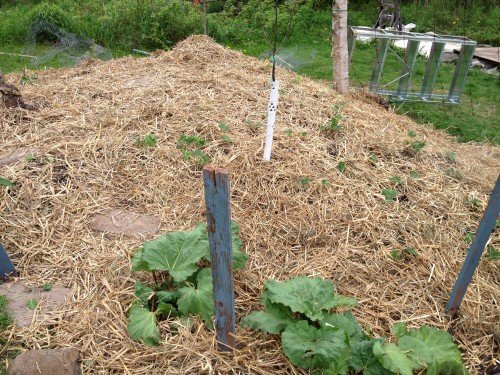

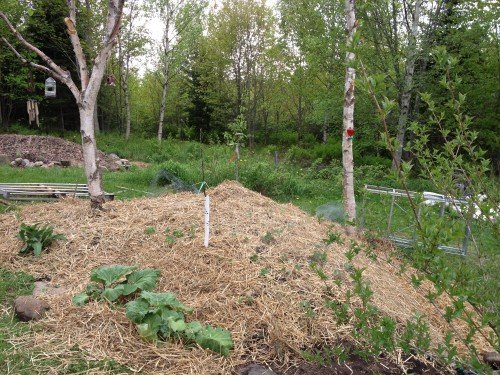
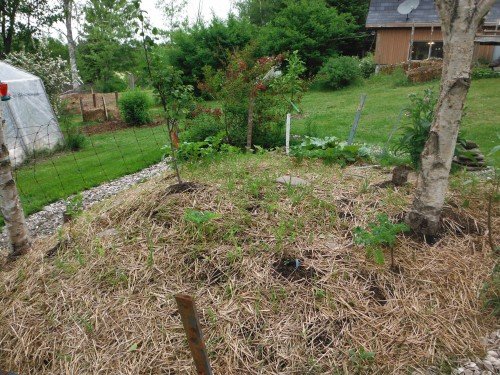
My future wife and I back then wanted to make a rock garden there. But that winter I read Sepp Holzer's book Sepp Holzer's Permaculture and I decided that after we made our first Hugelkultur bed and learned what worked and what didn't we would use the techniques for a perennial berry and fruit bed. The rock garden seemed the ideal location so we charged ahead.
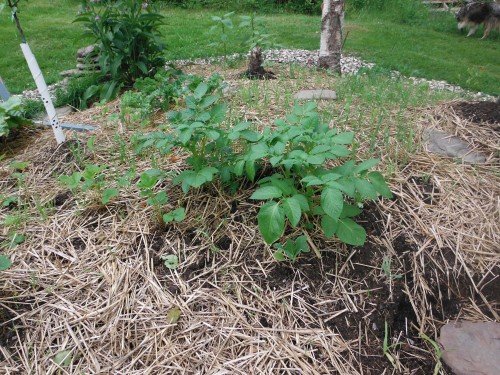


This marks the beginning of the 2013 season
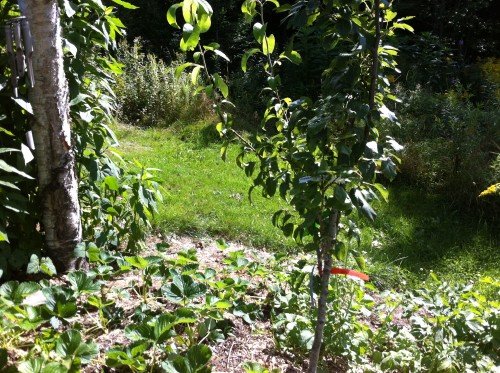

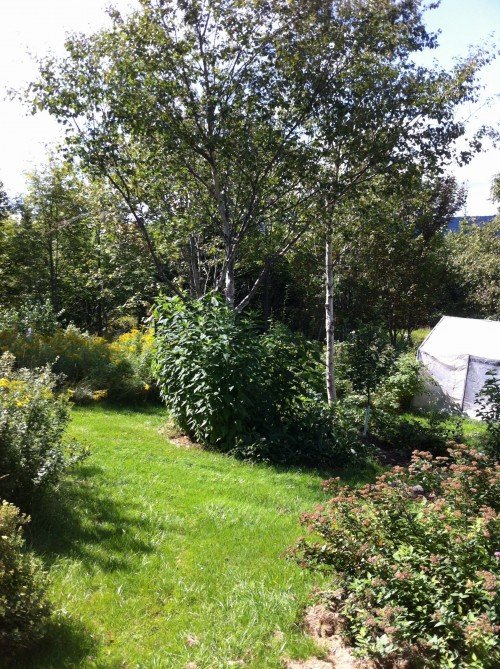
This is a couple from 2015
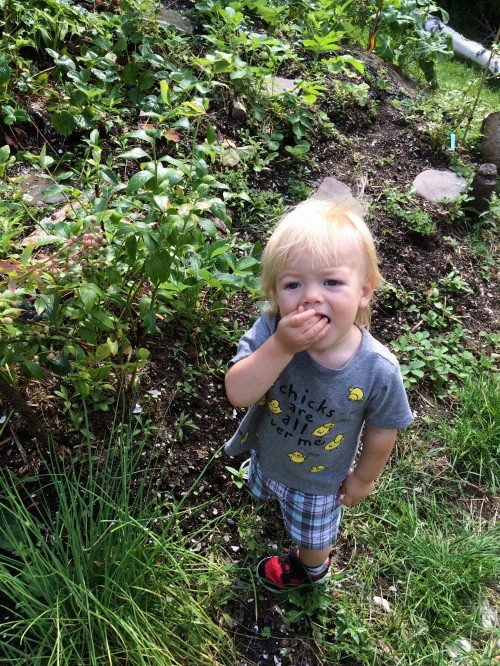
Last year we felled the birch trees to allow light to the mature apple tree and the high bush blueberries. I had allowed them to co-exist but to come full circle and let the mini orchard do well the birch trees had to go. The stumps have been left to go back to the earth, and this year I learned another bee fact. Certain pollinating insects need dead wood in the backyard to have habitat and be present in your own garden.

This year has seen the really blossoming of our apple tree. Last year it produced 8 apples only one edible due to certain toddler interference that we won't mention here but this year it seems close to 100. It is now producing heavily with apples that are pesticide free and healthy, which was my original goal.
Please ask questions below in the comments section I love to talk about gardening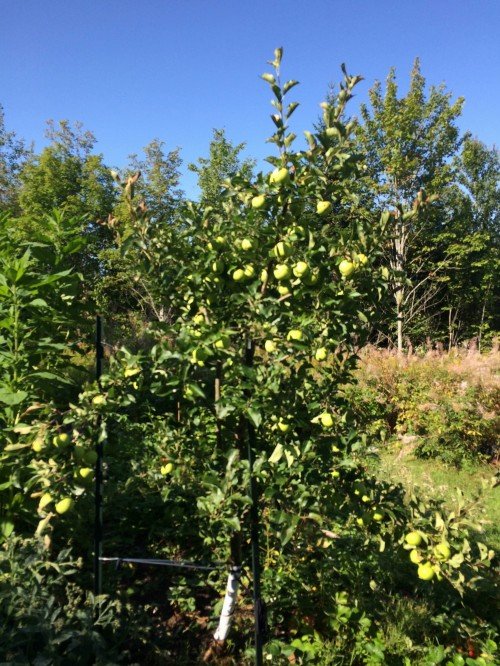
How much fruit are you managing to get from your mini-orchard?
Strawberries from July to November just a few a day for eating at breakfast. Blueberries I don't know this year, Levi at them all as the got ripe, and a good 50 apples on their way.
Have you noticed much change in the soil level of your hugelkultur? Many of the medium-size hugels I have seen start to sink in the second and third years. Do you see any "bones" poking up from your soil?
Yes definitely, we had to tear down our first hugel bed this year and reuse it's soil here and elsewhere in other garden beds. The technique works optimally on the large scale with excavator employed. This mound started 5-6 feet higher then the surrounding area and quickly came down to level with the natural terrain. Took it only 2 years to settle down.